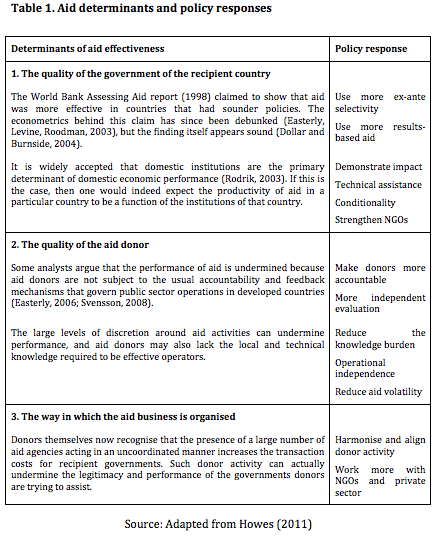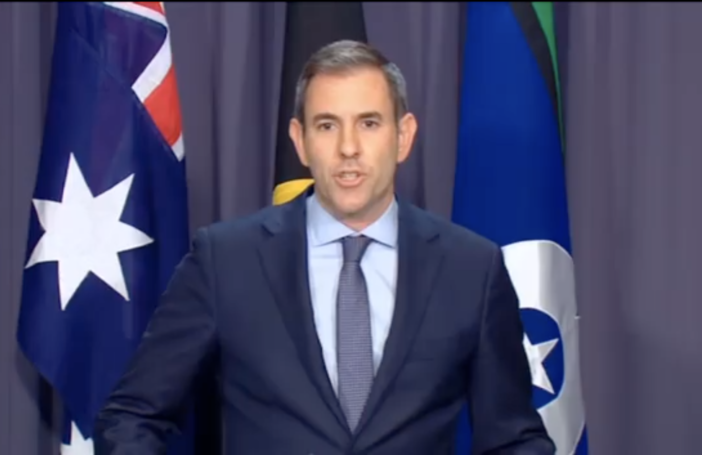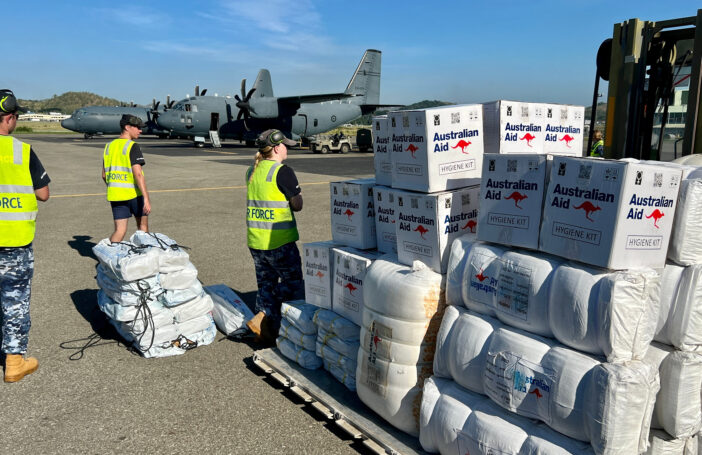Today is budget day and we will be bringing you analysis and unique insights on the aid budget here on the Development Policy blog. In the meantime, here is a recap of some of the Australian aid issues that we’ve covered over the last six months.
Context
There is bipartisan support for increasing the Australian aid program to 0.5% of Gross National Income by 2015-16, which implies a doubling of aid to over $8 billion from current levels, and a quadrupling from the $2 billion of 2005. Yet, despite this massive scale-up, aid policy has been an area starved of research and public discussion – though this is starting to change with an Independent Review of Aid Effectiveness, 247 submissions to the Review, a new AusAID-funded blog and online discussion group, and a new Development Policy Centre at the Crawford School.
Australian aid
Aid volumes and quality (Kate Higgins, Stephen Howes and Matt Morris) – A summary of recent patterns and trends in Australian aid is an interesting scene-setter for discussing the next doubling of aid. Australia’s aid has been expanding rapidly, doubling in the last five years. Australia gave $1.6 billion in 2000-01, $2.2 billion in 2004-05, and $4.3 billion in 2010-11.
Where aid is spent. In terms of geographical allocation, there has been a shift in aid from PNG and East Asia to Solomon Islands, Indonesia, and Iraq and Afghanistan. In terms of sectoral allocations, governance is the biggest spending area for the aid program, though in recent years the biggest increases have been in rural/environment and infrastructure.
How aid is spent. First, the share of aid given to technical assistance is declining, but is still very high. More than half of Australia’s aid used to go to technical assistance (some of it technical training and scholarships, but the bulk on advisers). Secondly, contributions to multilateral donors have not kept pace with aid budget. An important strategic issue for donor countries is how much of it they should give themselves (bilaterally) and how much through international organizations (multilaterally). Thirdly, AusAID provides 70% of the Australian aid program. How well AusAID performs will be critical to how effectively aid is scaled-up.
Fragmentation. Project size has fallen over time. If the average aid project size is not increased, then by 2015, we will have some 6,800 projects. That sounds unmanageable, and undesirable, and almost certainly is. Scaling up will have to mean not only more but larger projects.
Quality of aid. A CGD report last year, ‘Quality of Official Development Assistance Assessment‘ (QuODA), assesses the quality of aid given by donor countries and aid agencies. Australia was the top performer in the transparency and learning category. This was a good result. But Australia’s performance in other categories was not so strong. Australia ranked 14th in the ‘reducing burden’ category, 19th in the ‘fostering institutions’ category and 21st in the ‘maximising efficiency’ category.
Determinants of aid effectiveness (Stephen Howes)
 A new discussion paper by Stephen Howes provides a useful conceptual framework by drawing on wide literature and grouping the factors that determine aid effectiveness into three different categories. These categories consider reforms to improve the performance of recipients and donors, as well as the interactions between the two. Table 1 provides a summary of the determinants of aid effectiveness and some policy responses.
A new discussion paper by Stephen Howes provides a useful conceptual framework by drawing on wide literature and grouping the factors that determine aid effectiveness into three different categories. These categories consider reforms to improve the performance of recipients and donors, as well as the interactions between the two. Table 1 provides a summary of the determinants of aid effectiveness and some policy responses.
Independent Review of Aid Effectiveness
Terms of reference (Annmaree O’Keefe) – While the review is ostensibly about aid effectiveness, its terms of reference point to a product which promises to be significantly more influential and policy shaping than an aid technocrat’s review of efficiency. It will be looking at the program’s geographic focus, aid modalities and the program’s own performance and approaches. It will also be making recommendations on the organizational structure for the aid program although this comes after major changes were already implemented earlier this year. The program’s own internal arbiter of effectiveness, the Office of Development Effectiveness, also comes under the review team’s scrutiny.
Aid objectives (Peter McCawley) – Governments almost always have three goals for their foreign aid programs – a) development, b) strategic and foreign policy, and c) economic opportunities, which equated to commercial goals. The global development community tends to hate this ‘trilogy’ of goals. It regards the intrusion of political and commercial goals as a form of pollution of public policy. The development aid lobby (and other purists too) think aid should have one objective. Yet it is hardly possible to talk about ‘effectiveness’ in a sensible way until you have some clear idea about objectives.
Thoughts on reshaping aid (Mark Baird) – There is a real opportunity to reshape Australian aid to deliver better results. This means both increasing aid volumes and changing the way aid is delivered. More aid should go through multilateral channels – when they can meet Australia’s goals efficiently and effectively. Country programs should be focused on the East Asia and Pacific region, and reflect recipient country priorities. The needs of large middle-income countries will be very different to small island economies, and this diversity needs to be reflected in country strategies. AusAID’s business model and staffing should be adapted to support policy dialogue and manage large aid programs. Budgets should be organized around country strategies. And staff should be encouraged to focus on results: taking risks, learning and adapting. A more effective aid program – which builds on Australia’s reputation as a pragmatic and responsive partner – will be good for the region and good for Australia.
Delivering Australian aid
Multilateral aid (Matt Morris) – A strong case can be made that Australia should be contributing much more to the International Development Association. There is a good case for generous support to IDA. First, it would deliver aid through an effective donor. IDA performed well in a recent assessment of the quality of aid by CDG and Brookings, and has a track record of delivering results. Secondly, it would provide more aid to Africa and other poor countries. More aid to IDA would also contribute to Australia’s recently-announced target of 0.15 per cent of GNI for least development countries, a target which otherwise would be very difficult to meet. Thirdly, it would increase multilateral aid (from a low base). The Government has said it wants to work more with the multilateral system. IDA, the biggest and in many ways the leading multilateral aid agency worldwide, should be at the centre of any strategy of enhanced engagement. Fourthly, it would increase Australia’s influence. A big increase in contributions would enable Australia to ‘punch above its weight’ in the important debates underway about the future of the World Bank.
Cash on delivery aid (Richard Curtain) – A proposal from the Center for Global Development, promises to fundamentally change how aid is delivered, by only paying for verified results. What is this new approach to aid and could it help Australia to improve aid effectiveness in Timor-Leste and the Pacific? AusAID, in its response to the current review of aid effectiveness, has an opportunity to propose new ways of delivering aid. Any suggestions, however, need to show how they overcome the perverse incentives generated by the existing system of aid delivery. In particular, the challenge for AusAID is to shift away from its close monitoring of inputs and outputs at the expense of outcomes. Included in this new approach must be a way of giving aid recipients real responsibility for the continued sustainability for aid funded initiatives.
Budget support (John Blunt) – Budget support has become an increasingly important foreign aid instrument. It has received growing attention by bilateral donors and international financial institutions in the context of a partnership-based approach to development assistance. Yet the concept of budget support itself is still emerging and subject to different interpretations. It has also raised skepticism among observers who question the impact, fiduciary soundness and incentives of budget support. The emerging consensus though among donors is that budget support provides a more effective approach to development assistance for countries that have a good track record and a reasonably sound policy and institutional framework, including transparent budget and adequate financial management and procurement systems.
Independent evaluation and aid transparency
ARDE 2009 (Ian Anderson, Richard Curtain, Peter McCawley and Matt Morris) – Evaluation reports, such as AusAID Annual Review of Development Effectiveness (ARDE) 2009, are especially important for an aid program that has doubled in the last five years and is set to double again to $8.6 billion by 2015-16. The 2009 ARDE provides some useful insights and analysis on the performance of the aid program (e.g. the fragmentation discussion) that make the report important reading for anyone interested in Australian aid. Peter McCauley notes that the report is often ‘gently critical’, such as the ‘thrashing with a feather’ of traditional approaches to aid. The Independent Review of Aid Effectiveness will be looking closely at the findings of the 2009 ARDE as part of their assessment of the last doubling of Australian aid, but they will also need to get much more information from ODE and AusAID to bring the official assessment up to date. As part of the next doubling of aid, the Review Panel should also consider how evaluation can help Australia to scale up aid programs that work and feedback lessons into program design and implementation.
Aid transparency (Alexandra Beech) – Aid transparency is a hot topic at the moment, with widespread acknowledgement from governments and CSOs alike of the benefits it can bring in terms of delivering improved accountability, increased aid effectiveness and better value for money. The last couple of months have seen significant developments on the aid transparency agenda both internationally, and by individual donors. Aid transparency has the potential to revolutionise aid as we know it. Owen Barder, the Director of AidInfo, sums up the case.
[Aid transparency] democratises aid, removing the monopoly of information and power from governments and aid professionals. It inspires innovation and informs learning. It reduces bureaucracy. It also makes it possible for communities to collaborate, for citizens to hold governments to account and for the beneficiaries of aid to speak for themselves.
With a new global standard for sharing information, aid in the information age will look very different from the past.
The future of Australian aid
This round-up is not the end of the discussion on Australian aid, and nor is it comprehensive. The Aid Review has now presented its findings and recommendations to government, and beyond the 2011-12 Budget and the Aid Review there will be an ongoing discussion on how the Australian aid program is performing – hopefully informed by rigorous evaluation, and transparent aid information.
A version of this post appeared first here on the Development Policy blog.





